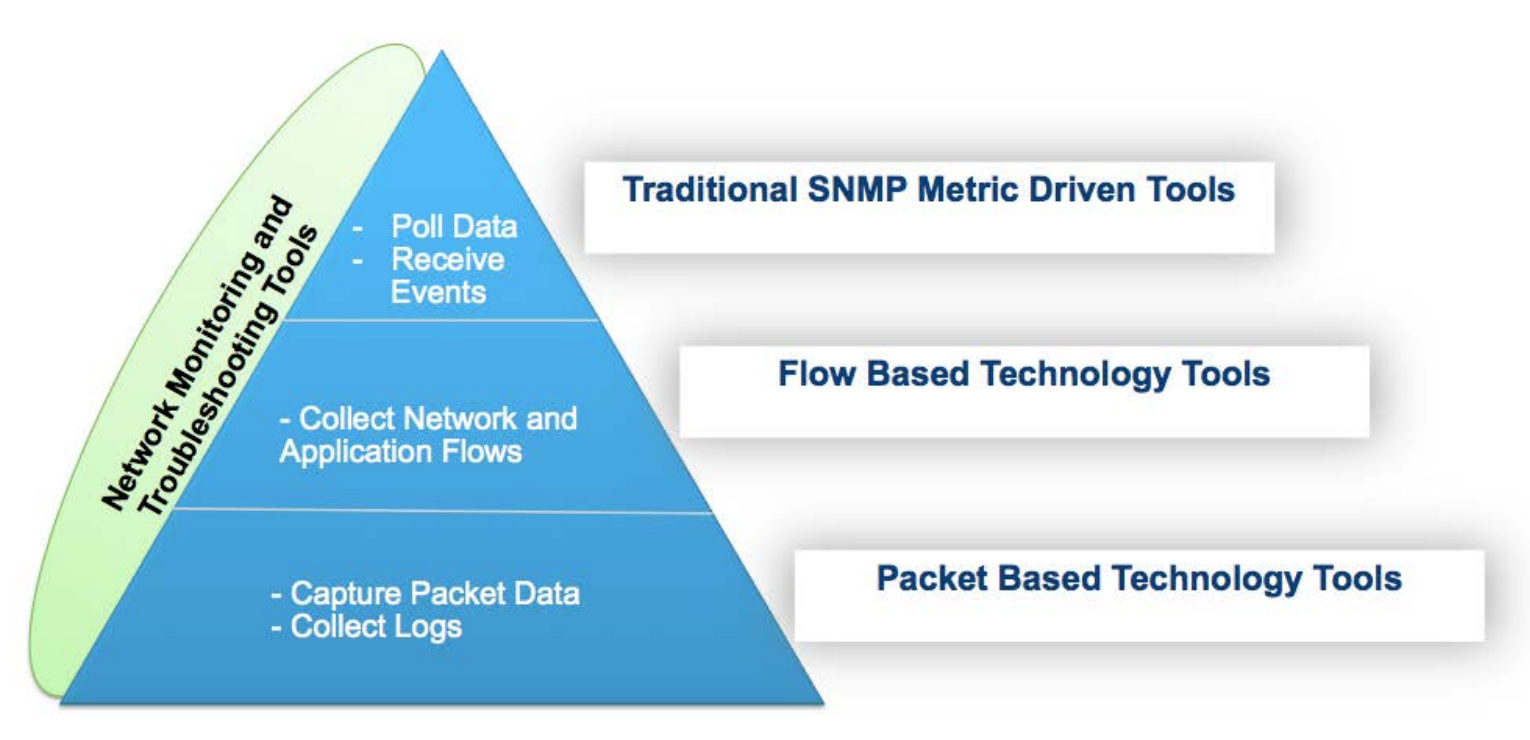This guide shows how to perform day-to-day management of an NSX for vSphere ("NSX-v") deployment. This information can be used to help plan and carry out operational monitoring and management of your NSX-v implementation.
To monitor physical network operations, administrators have traditionally collected various types of data from the devices that provide network connectivity and services. Broadly the data can be categorized as:
- Statistics and events
- Flow level data
- Packet level data
Monitoring and troubleshooting tools use the above types of data and help administrators manage and operate networks. Collectively, these types of information are referred to as “network and performance monitoring and diagnostics” (NPMD) data. The diagram below summarizes the types of NPMD data and the tools that consume this information.

The tools used for monitoring physical networks can be used to monitor virtual networks as well. Using standard protocols, the NSX platform provides network monitoring data similar to that provided by physical devices, giving administrators a clear view of virtual network conditions.
In this document, you'll learn how an administrator can monitor and retrieve network statistics, network flow information, packet information, and NSX system events.



